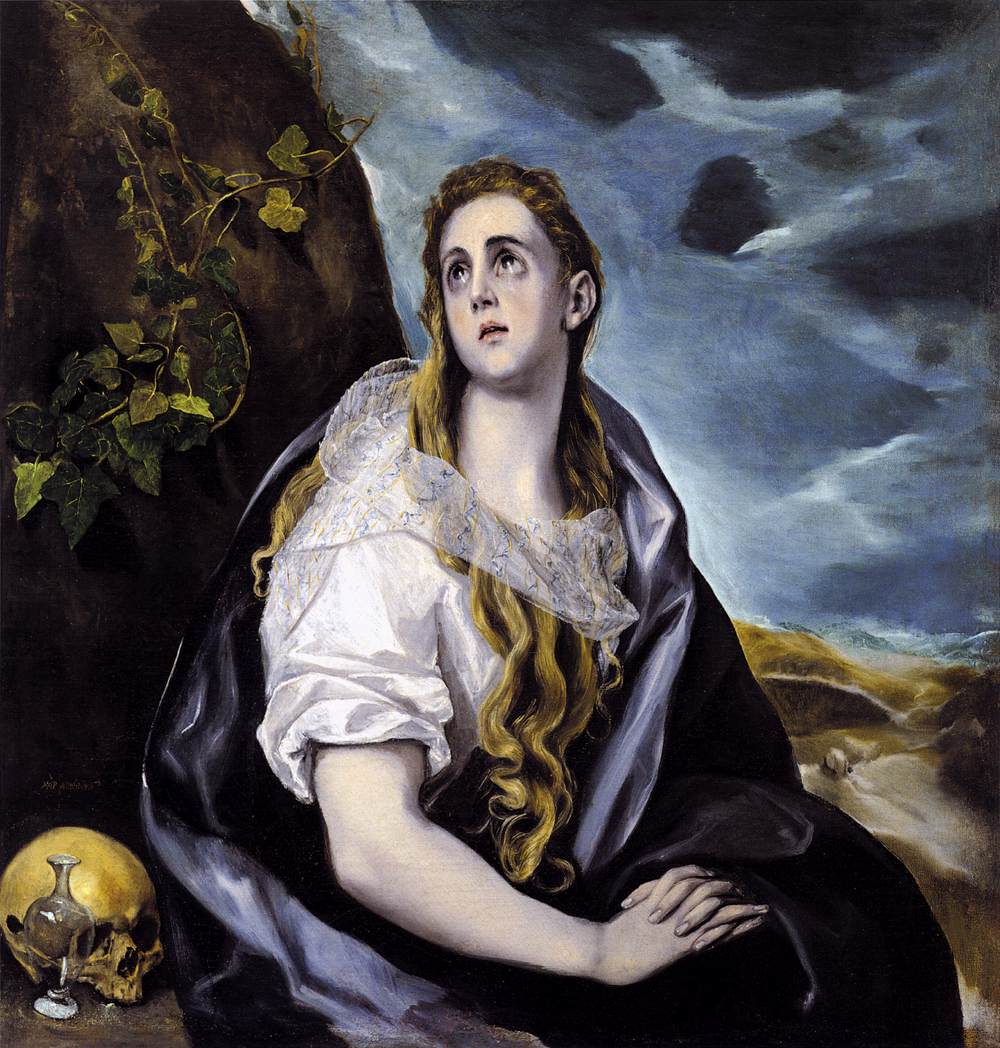Description
The painting "Mary Magdalena in Penitence" by El Greco is a masterpiece of Spanish Renaissance art that is currently in the collection of the Museo del Prado in Madrid. This work of art presents an interesting combination of elements of Renaissance art with the technique of mannerism, which is characterized by the exaggeration of forms and the distortion of proportions.
The composition of the painting is very striking, since the figure of Mary Magdalene occupies a large part of the space in the work, which gives it a great presence and visual strength. The figure of Magdalena is kneeling with her hands together as a sign of prayer, which conveys a sense of humility and repentance. In addition, the light that illuminates her face and her body gives her an almost divine appearance.
The use of color in the work is very interesting, since El Greco uses a very rich and varied color palette. The dark, earthy tones of the background contrast with the bright, vivid colors of Mary Magdalene's clothing, creating a very appealing visual effect. In addition, the artist uses the chiaroscuro technique to give depth and volume to the figure of Magdalena.
The story behind the painting is also very interesting. According to Christian tradition, Mary Magdalene was a woman who lived in the first century and was one of the closest followers of Jesus. After her death, she became an important figure in the early Church and is considered the patroness of penitents. El Greco's painting represents the moment in which Magdalena repents of her sins and surrenders to prayer and penance.
Finally, a little-known aspect of the painting is that it was commissioned by the convent of Santo Domingo el Antiguo in Toledo, where El Greco himself is buried. The work was made in 1585 and is considered one of the best works of the artist. In short, "Mary Magdalena in Penitence" is a fascinating work of art that masterfully combines technique, composition, and history.


